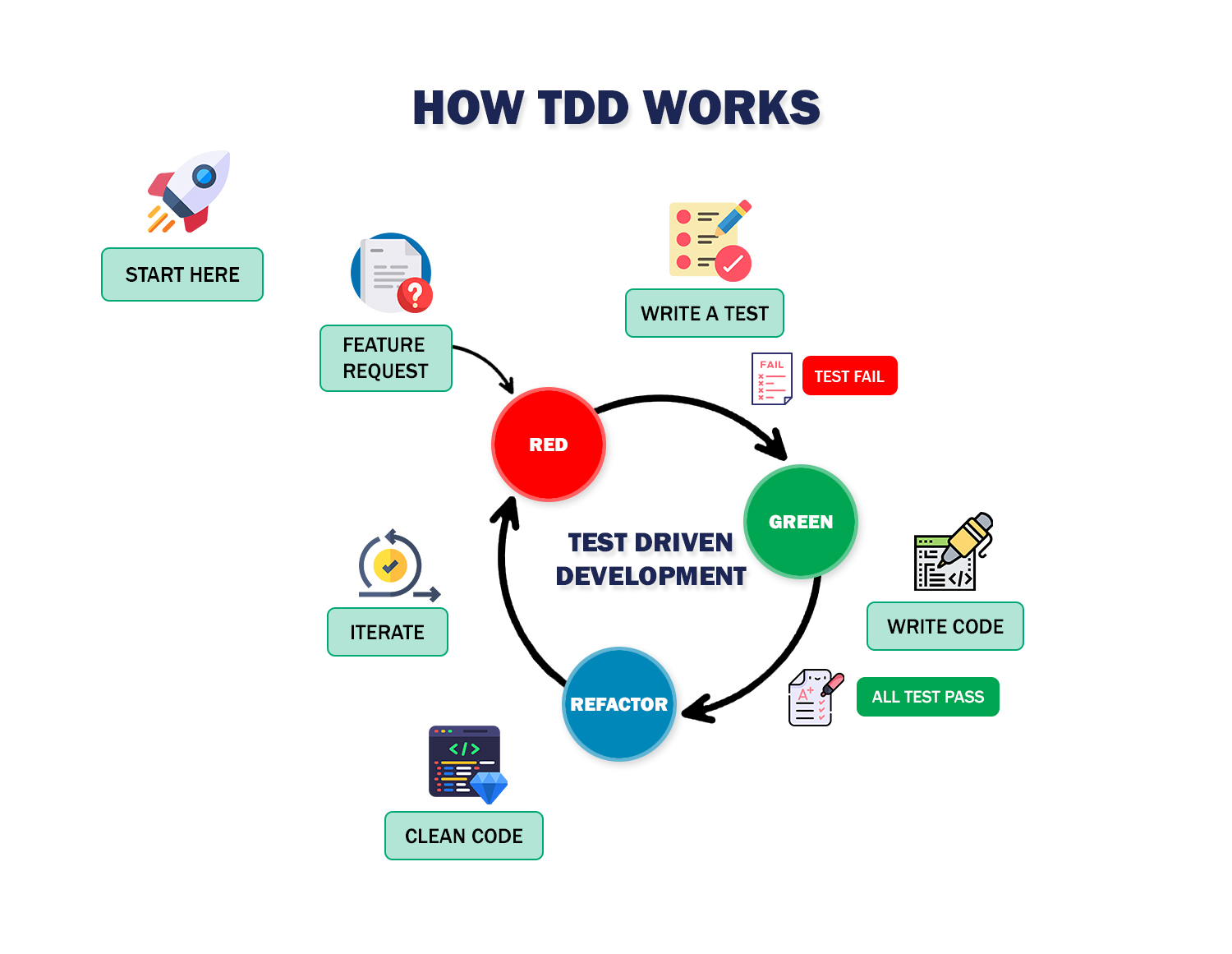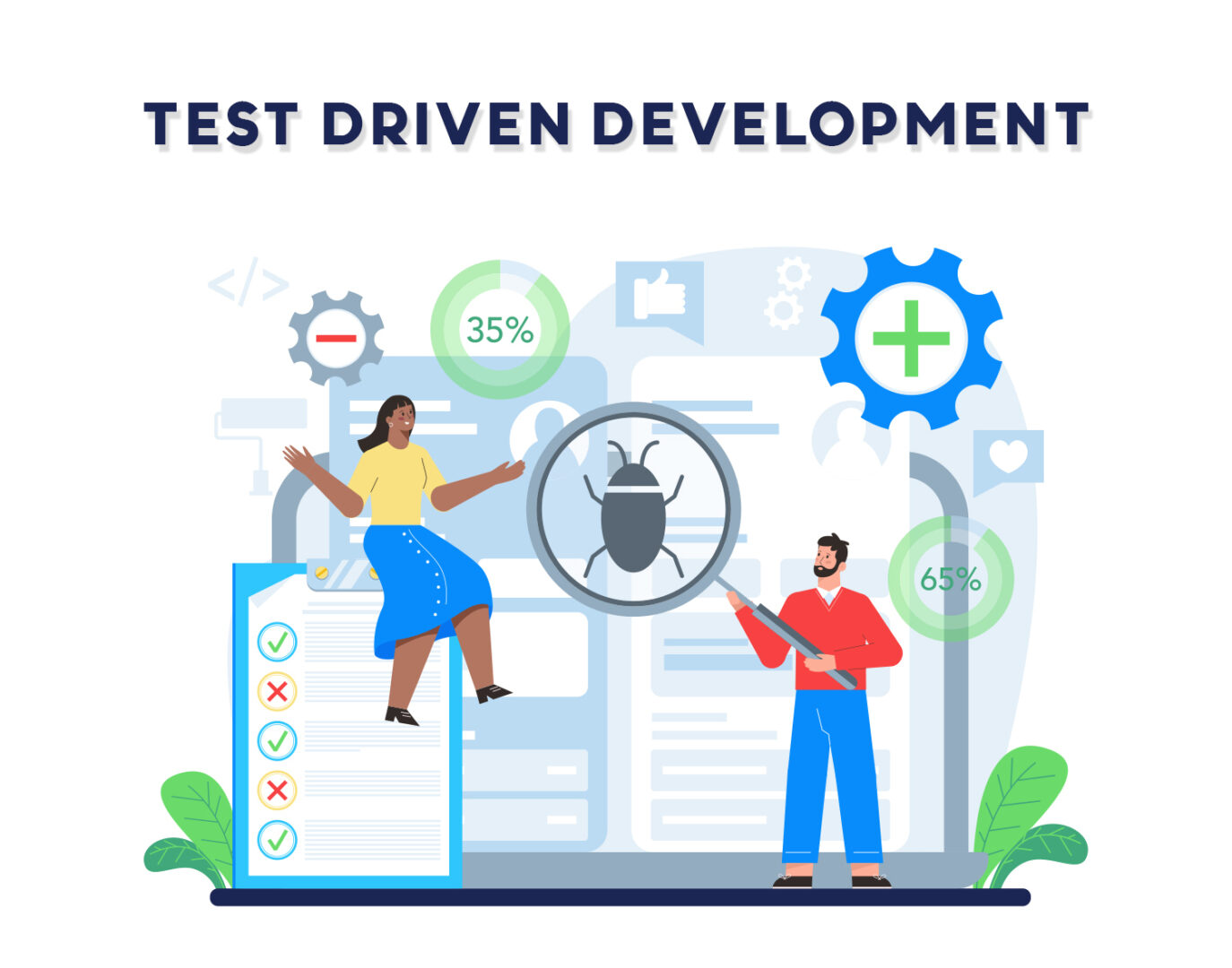What is the TDD framework? In this blog, you’ll learn everything about the method of TDD (test-driven development) and its framework. Every developer aims to write quality code to see if each software functionality works as it should. This is why the testing process becomes essential to make it possible. Test-driven development offers a different approach to code testing. And several frameworks are available to help you do that. But, before knowing which TDD framework you should use, you must know what this method offers and some other key details.
What is TDD (Test Driven Development)?
How to write test cases for TDD?
There are 5 steps to perform the TDD method.
Step 1
Define the requirements
Step 2
Write a test to fail
Step 3
Write the code to pass the test
Step 4
Refactoring code
Step 5
Repeat the process
What are the 3 essential components of the TDD cycle?
Write a small test
Make changes
Refactoring

Which frameworks are needed for TDD?
Examples of TDD (Test-driven development)
Simple calculator function
During developing a simple calculator’s functions like add, subtract, multiply, and divide, you create a test case for each one by one. First, you’ll write the test case for the add feature and then the code for the add function to pass the test. Afterward, you repeat the process for other features in the same way.
Login functionality
Log in function is part of the user authentication system. To develop that, you first write a test case for the log-in function, and then you write enough code for the log-in functionality to pass the test. When it works perfectly, you perform the same process with other functions such as account verification, registration, and password.
Shopping cart
For the shopping cart, you write test cases like adding, removing, and calculating the total cost individually. You repeat writing the test case for each function to pass the test to start writing the production code.
What are the advantages of TDD?
Let’s learn about this approach’s advantages, making it unique from the traditional method.
Enhanced quality
Test-driven development ensures that the code behaves as a certain project’s requirements demand. The process makes sure to test and refine again and again to give higher-quality outcomes. Here, you keep in mind to write the necessary code to meet the requirements. Afterward, it helps you to determine what other changes you need to improve to implement every feature in the software.
Real-time feedback
The process shows real-time feedback on any changes in the code so the developers can fix the error before the final development. With the support of TDD, you get an error and bug-free code. This saves much time, which you might usually waste looking for that one creepy bug.
Better design
In Test-driven development, developers write compatible and separate code, which helps develop better software design. TDD becomes a reliable solution for developers to design better code that will be easy to understand.
Builds confidence
With TDD, developers can build their confidence in code changes. TDD also reduces the fear of breaking code and makes it easy to refactor and move with little risk to enhance its overall quality.
What are the limitations of TDD?
To perform TDD, you need to manage a different workflow and mindset. And even having all the useful benefits, there are some major challenges in TDD. Let’s learn about them one by one.
Time-consuming
The process consumes much time since developers have to write the tests before writing the actual code. It also slows the process if any specific requirements change, and developers must maintain the tests.
Lengthy process
The process is lengthier with larger codebases. It may become more complex and challenging with complicated systems. Since writing a test is something only some developers can do perfectly, other developers may find it hard to write a test after the unit test level.
Maintaining the tests along with new changes
If any changes occur in the codebase, updating the tests is necessary at the same time. On the other hand, you can only find bugs that you have introduced in the test. So, you need to ensure you’ve understood the problems and requirements well, and only then will you write the test. Otherwise, the tests can’t help you to find errors and bugs.
Difference between Test-driven development and Traditional Test: which one is better to choose?
Different approach
In the classic method, developers only focus on writing codes without having much worry about writing the test simultaneously. But, TDD focuses on comprehensive testing, writing the test before writing the code, which can slow the initial development stage.
Delivery time
Traditional testing is easier to learn and perform than TDD as many developers are familiar with the process, saving much time. In the TDD process, it’s the opposite, which makes the process lengthy and time-consuming.
Different aims
Test-driven development is an iterative process that focuses on testing each small functionality code with automated tests one by one. However, the traditional method tests all code once they are already written.
If a project needs to be done in a short period, TDD is not advisable. Test-driven development is a powerful tool, without a doubt, but it can’t replace traditional testing entirely. The traditional testing method is still a valuable and easier approach for most developers in the industry. Which one is better depends on the type of project, deadline, and requirements. You can choose any method according to those considerations.
Final Words
In a nutshell, the TDD method is an approach to writing the test to check the code thoroughly for each software feature. So, what is the TDD framework? Well, a TDD framework helps to execute the unique approach for testing the actual code for software development. Only in 5 steps it gives you a refined and error-free code. However, the method doesn’t fit well with all projects because of its time-consuming and lengthy process. To start working with this method, you must first decide how much time you have in your hand for your current project. You can use the TDD method if you have sufficient knowledge and time.
Do you have any other doubts? Reach out to us for a free consultation. Our team helps businesses in developing software to achieve their future goals in this vast industry.
FAQ
Yes, TDD is a rapid cycle, as performing the tests takes multiple repetitions per hour.
In TDD, developers write the test cases for the actual code.
The other names of TDD are Test Fast Development and Test Driven Design.
Yes, TDD follows the test-first approach. This makes sure that the automated tests become more reliable for the actual code to behave according to the requirements.

Leave a Reply